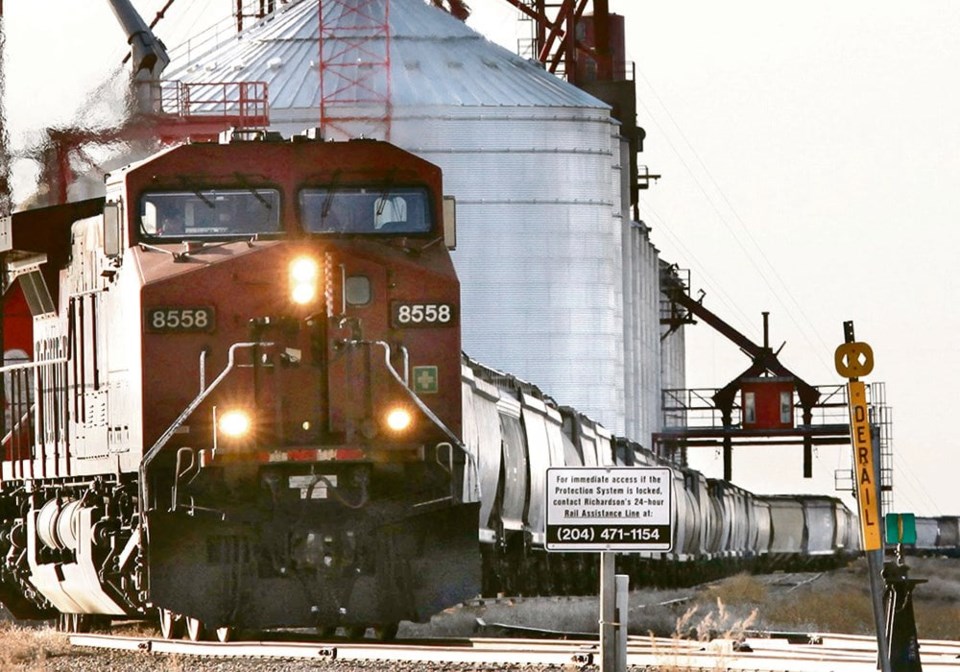SASKATOON — Canada is dodging much of the grain shipping turmoil other exporters are facing, says Canada’s grain monitor.
Total exports are about where they should be for this time of the year, said Mark Hemmes, president of Quorum Corp.
“A large part of it has to do with the great weather we had before New Year’s,” he said.
“Railways are just humming along, ships are getting loaded and we don’t see a great big pile-up of vessels on the West Coast.”
The Port of Thunder Bay got an extra week of shipping courtesy of the mild temperatures.
“Any kind of problems that happened because of the (St. Lawrence) Seaway strike pretty much got wiped away by having that extra week of shipping on the seaway,” said Hemmes.
Canadian exporters have avoided some of the headaches facing their competitors in the United States, Brazil, the European Union and the Black Sea.
The global grain trade has become more costly and less efficient due to problems in two key grain shipping corridors, the U.S. Department of Agriculture said in its recent Grain: World Markets and Trade report.
The Panama and Suez canals have been shortening shipping routes for more than 100 years.
“The Panama Canal allows vessels from the Western Hemisphere to avoid the historically dangerous Cape Horn on the southern tip of South America,” stated the USDA.
“Similarly, ships can bypass the Cape of Good Hope by using the Suez Canal.”
However, both canals have experienced reduced traffic in recent months, resulting in higher shipping costs and increased travel time for many exporters.
In Panama, the problem has been insufficient rainfall, which has resulted in historically low water levels in the canal.
The canal has been restricting the daily number of vessels since July 2023.
“Ships carrying corn, soybeans and wheat from the U.S. Gulf and northern Brazil that would have travelled through the Panama Canal, mostly to Asia, must either compete with other goods for costly transit rights or extend their journeys by crossing the Atlantic Ocean,” said the USDA.
Many of those ships were rerouted to the Suez Canal instead.
“However, Houthi attacks on vessels in the Red Sea have introduced another challenge for global seaborne trade,” stated the USDA.
Missile and drone attacks have caused major shipping lines to stop using the canal, forcing them to detour around the southern tip of Africa.
“EU and Black Sea wheat destined for East Africa, the Middle East and Asia could face journeys of thousands of extra miles,” said the USDA.
The Baltic Dry Index, which is a measure of global shipping costs, spiked in early December in response to the Houthi attacks and remains elevated compared to last year.
Hemmes said 70 percent of Canada’s grain exports are shipped through the country’s west coast ports to markets in the Asia-Pacific region.
“That traffic does not get impacted by either the Panama (Canal) or by the Red Sea,” he said.
Canada does have some important grain markets in the Mediterranean Basin, but they are not the countries where there is significant unrest today.
“Where we’re selling it isn’t using the Suez (Canal) or going through the Red Sea,” he said.
“It’s going into North Africa.”
Canada does not sell a lot of grain to countries in East Africa, which are serviced by Red Sea vessels.
“Those are markets that are looking for cheap protein and we’re not really in the cheap protein business,” said Hemmes.
So, for the time being, Canada has managed to escape much of the grain shipping turmoil other exporters are dealing with.
“We’re enjoying a rather peaceful and positive period of time despite all of the other stuff that is going on around the world,” he said.




